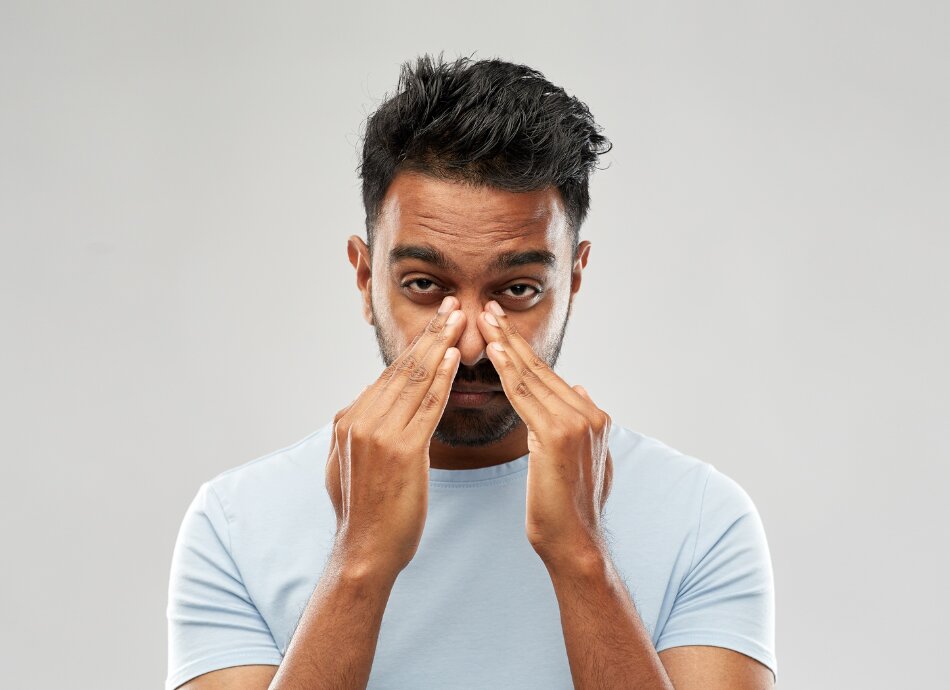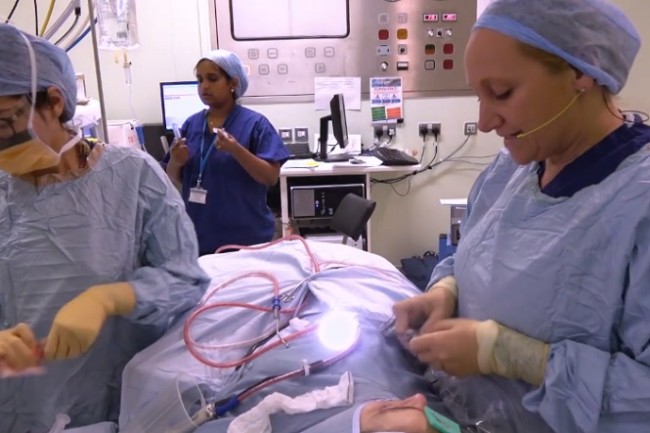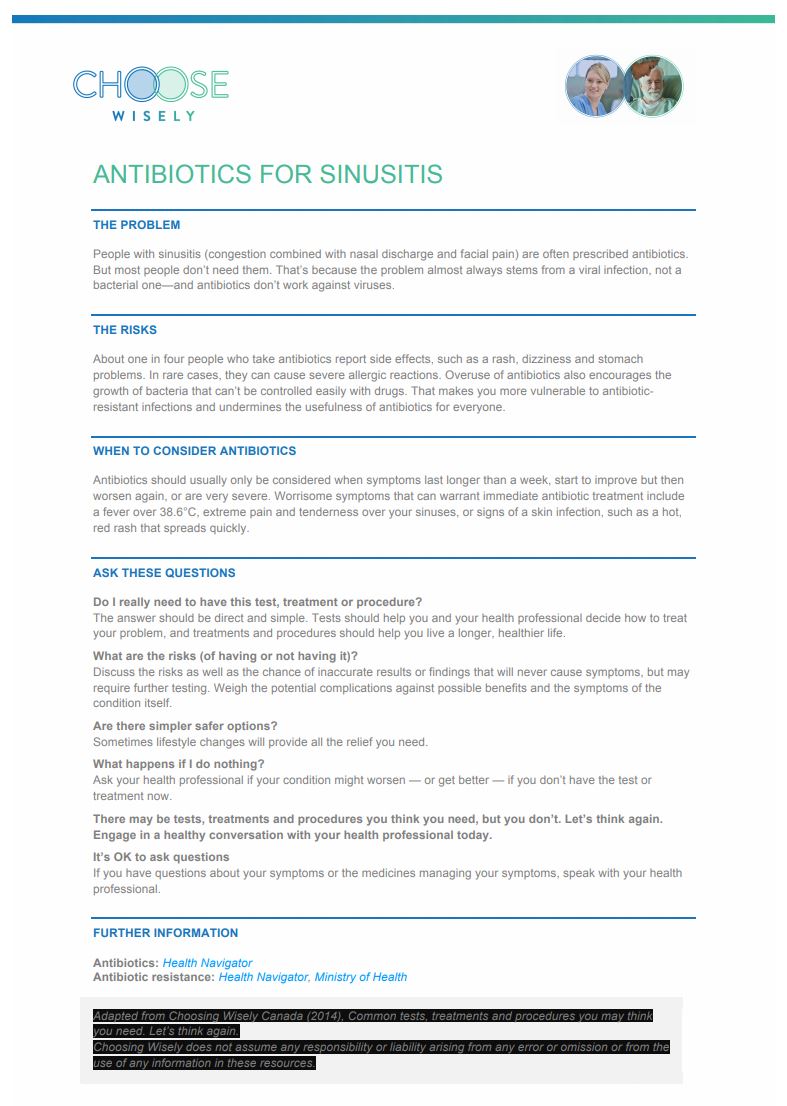Wishing everyone happy holidays and a joyful New Year from the Healthify team. Don't forget to Slip, Slop, Slap and Wrap!
Chronic sinusitis | Mate taringa-ihu-korokoro
Also known as chronic rhinosinusitis (CRS)
Key points about chronic sinusitis
- Chronic sinusitis (mate taringa-ihu-korokoro) is an ongoing inflammatory condition of your sinuses - air–filled spaces in the skull, behind your forehead, eyes, nose and cheeks.
- The symptoms last for 3 months or more.
- Sinusitis occurs when your sinuses cannot drain properly. It causes a heavy, full feeling in your head that can be painful and uncomfortable.
- Chronic sinusitis is treated with medicines, non-surgical treatments, surgery or a combination of these.
- There are things you can do to help stop you getting chronic sinusitis.

The sinuses are tiny air spaces in your cheeks and forehead and around your eyes. They're lined with a thin membrane that makes mucus, which drains out through your nose. Sometimes the lining becomes inflamed or infected, making it harder for the mucus to drain properly, and the sinuses become blocked. Chronic sinusitis is when the inflammation or infection lasts for more than 3 months.
Image credit: Canva
Things that can increase your risk of getting chronic sinusitis
- Asthma and allergies, eg, hayfever
- Nasal polyps (swellings in the linings of your nose or sinuses).
- Deviated septum (where the wall between your nostrils has been pushed sideways by an injury).
- Smoking, including being around other people who are smoking.
- Ongoing exposure to irritating chemicals or fumes.
- Regular use of some nasal decongestants.
- Dental disease.
- Medical conditions, eg, cystic fibrosis.
The main symptoms of chronic sinusitis are usually a blocked nose (nasal obstruction) and reduced sense of smell.
You may also:
- have a headache that becomes worse when you lean forward
- have a tender and painful face
- have a sore throat, nausea or coughing
- have sore ears or teeth
- feel generally tired
- have puffy eyes
- have bad breath
- not be able to smell or taste things normally.
Unlike acute sinusitis, chronic sinusitis doesn't often cause a fever.
Diagnosis
Your healthcare provider can diagnose chronic sinusitis by reviewing your medical history, completing an examination and conducting some tests, eg, a CT scan of your sinuses.
Treatment
Often treating the underlying cause will help to improve your symptoms. This may mean treating your asthma, allergies, any dental disease, or quitting smoking. If your chronic sinusitis is because of the structure of your nose and nasal passages (eg, nasal polyps, a deviated septum, narrow nasal passages or tissue thickened by years of infection), then it may involve treating this through surgery.
Self-care
You can try the following things to relieve your symptoms:
- Saline rinses done every day can keep mucus loose, remove secretions, reduce post-nasal drip and rinse away allergens and irritants. You can make a home-made sinus rinse solution or you can buy a sinus rinse from your pharmacy. Read more about saline nasal sprays, drops and rinses and watch a video on how to do a sinus rinse below.
- Steroid nasal sprays can help to reduce inflammation of your sinus linings, reduce mucus production and help shrink any polyps that may be present. They have the advantage of delivering the medicine right where it is needed. Read more about steroid nasal sprays.
- Pain relief medicines (eg, paracetamol or ibuprofen) are not ongoing treatments and should only be used when necessary for the shortest possible time.
- Antihistamines, especially ones that are less likely to make your drowsy (eg, loratadine), can be helpful in treating allergy and relieving your sinus symptoms if allergy is the cause. However, they can dry and thicken secretions and make it hard to drain, so they're not suitable for everyone.
- Antibiotics may be needed if the inflammation leads to a sinus infection. You may need to take them for several weeks. Your doctor will be the best person to guide you about this kind of treatment.
VIDEO: Sinus rinsing with saline or medication
The following video demonstrates how to do a sinus rinse. It may take a few moments to load.
(Mayo Clinic, US, 2020)
Surgical treatment
If medical treatments don't help, your healthcare provider may refer you to an ear, nose an throat (ENT) surgeon who may offer endoscopic sinus surgery. There are several options:
- Functional endoscopic sinus surgery (FESS). This involves a surgeon inserting an endoscope (long tube) into your nose through which they can see what is blocking drainage of your sinuses and remove any tissue that is causing the blockage. This is often all that is needed to improve sinus drainage and ventilation and help to restore normal function to your sinuses.
- Nasal surgery. Some people have a deviated septum between the left and right nostrils. This can be caused by an injury or can be something you're born with. Others have extra large nasal turbinates (structures in your nose that clean and moisten the air you breathe). Nasal surgery to correct these problems can be helpful.
- Balloon catheter dilation of paranasal sinus ostia. This involves a surgeon pushing a small balloon through a flexible tube in your nostril into the blocked sinus. By inflating the balloon, blocked areas are pushed to the sides, the balloon is deflated and removed, leaving a sinus drainage channel that can drain properly again.
Video: Endoscopic sinus surgery
This surgical video demonstrates the procedure of endoscopic sinus surgery, carried out by Professor Claire Hopkins of Guy's and St. Thomas' Hospital, London, UK. Click anywhere on the image to visit the website, then click play.
 (external link)
(external link)
(The Journal of Laryngology and Otology, UK, 2018)
If you develop acute sinusitis, you can take steps to help prevent it from becoming chronic, including:
- using saline rinses
- drinking plenty of water
- breathing in steam when you’re in the shower
- propping your head up with a higher pillow when you’re sleeping
- blowing your nose gently
- only taking antihistamines if your sinusitis is caused by allergies
- only using nasal decongestant sprays for a day or 2 as using them for too long can make the problem worse.
Antibiotics for sinusitis(external link) Choosing Wisely, NZ, 2014
Sinusitis (external link)NHS Choices, UK
Acute and Chronic Sinusitis – treatments and home remedies (external link)WebMD
Sinusitis(external link) Choosing Wisely, American Medical Association
Patient education – chronic rhinosinusitis (beyond the basics)(external link) UptoDate
Resources
Treating sinus infections – don’t rush to antibiotics(external link) Consumer Reports. Adapted by Choosing Wisely Canada
Your family and antibiotics – what you need to know (external link)PHARMAC, NZ
Antibiotics for sinusitis(external link) Choosing Wisely, NZ
Virus action plan (adults)(external link) He Ako Hiringa, NZ
Virus action plan (child over 6 months)(external link) He Ako Hiringa, NZ
References
- Antibiotic guide – choices for common infections(external link) BPAC, NZ, 2023
- Caspersen LA, Walter LM, Walsh SA, et al. Adult sinusitis – plain language summary(external link) American Academy of Otolaryngology 2015;153(2):161–166
Clinical resources
Sinusitis management algorithm(external link) Australian Family Physician, 2016
Continuing professional development
Video: PHARMAC seminar: Ear, nose and throat (ENT) update, 2 of 5. Chronic rhinosinusitis – Richard Douglas (19 minutes)
(PHARMAC, NZ, 2019)
For more videos of the same series, view PHARMAC seminars(external link).
Brochures

Consumer Reports. Adapted by Choosing Wisely Canada, 2016

PHARMAC, NZ

Choosing Wisely, NZ, 2014
Credits: Healthify editorial team. Healthify is brought to you by Health Navigator Charitable Trust.
Reviewed by: Dr Art Nahill, Consultant General Physician and Clinical Educator.
Last reviewed:





